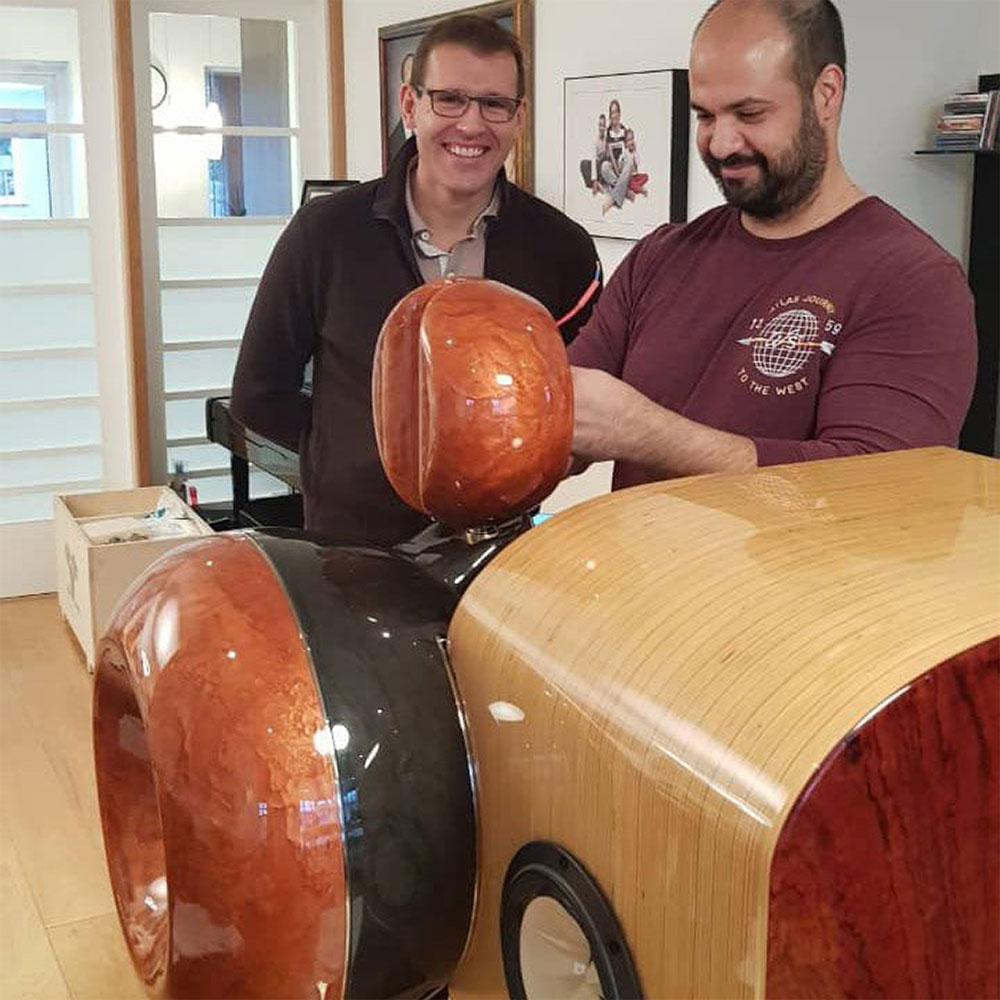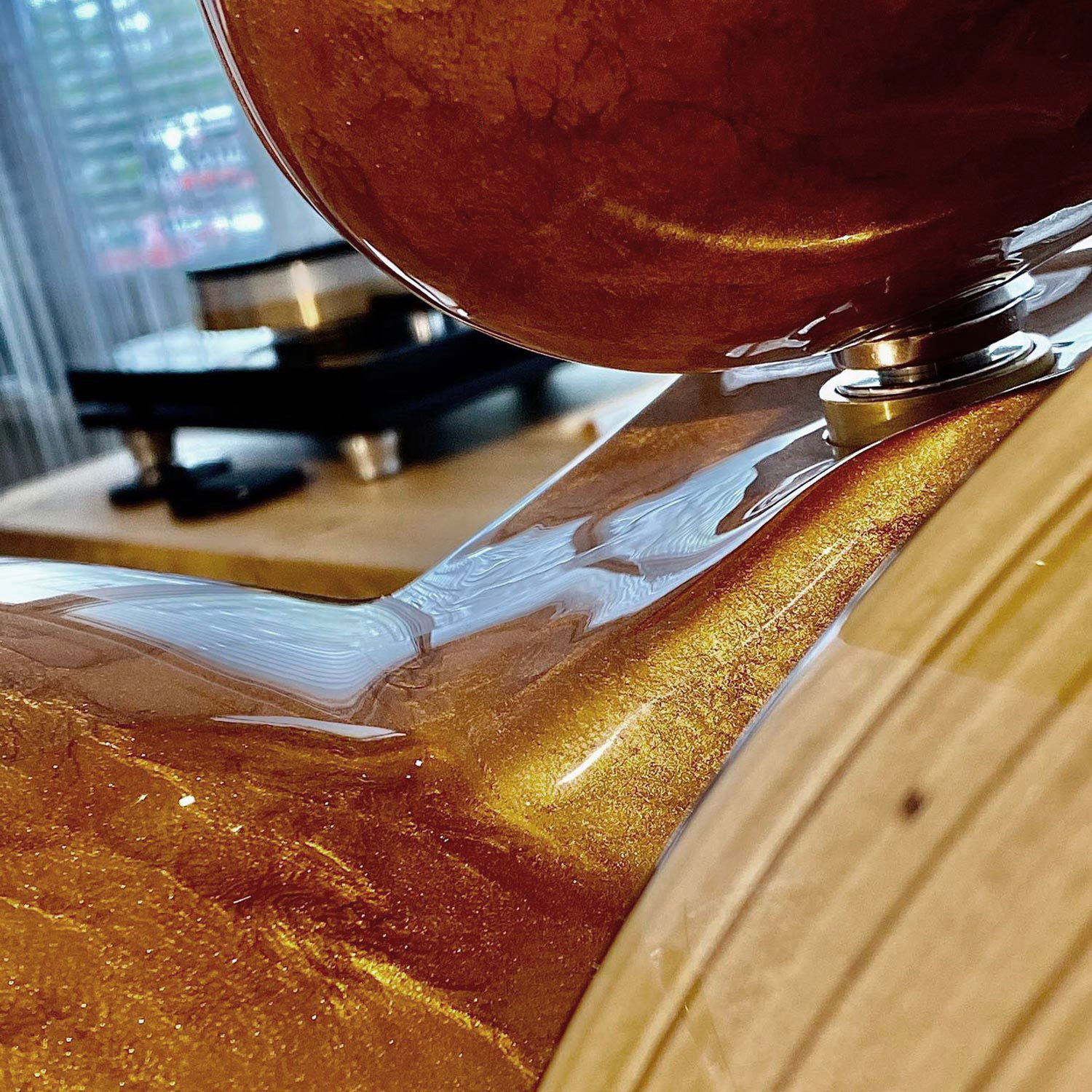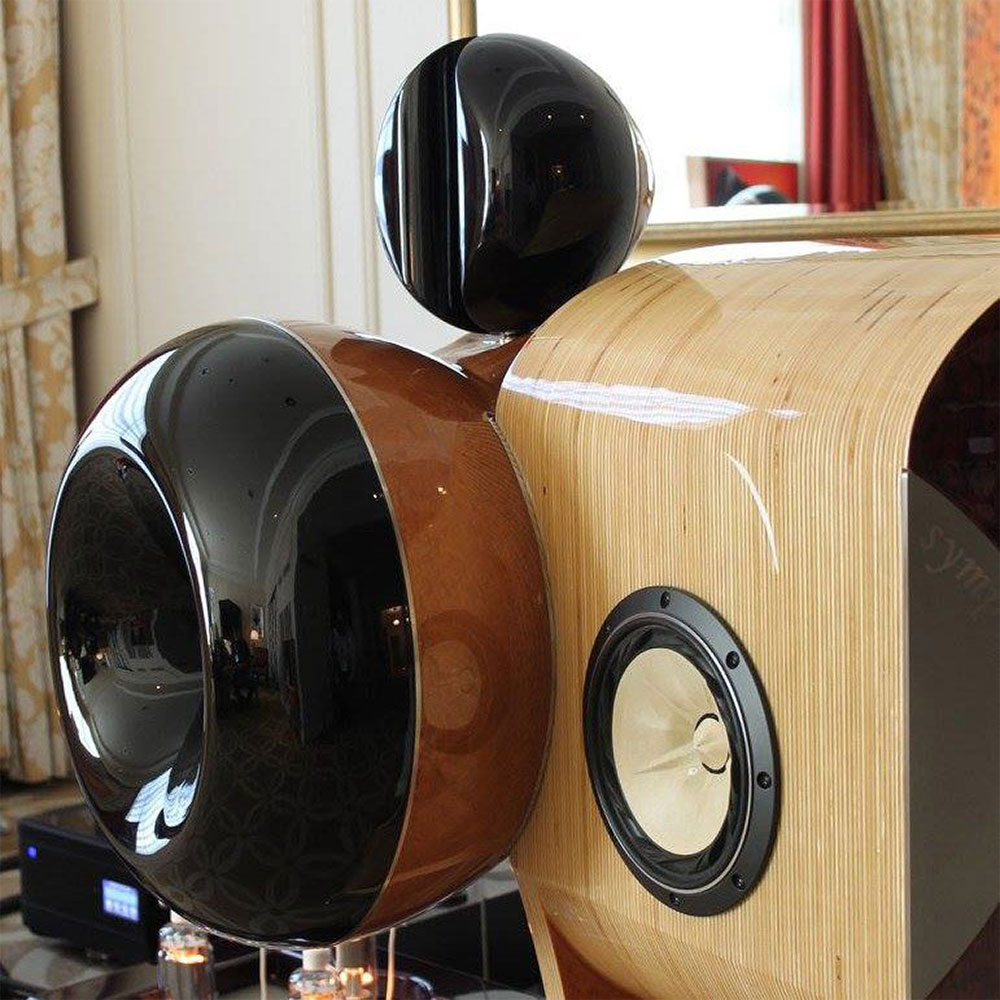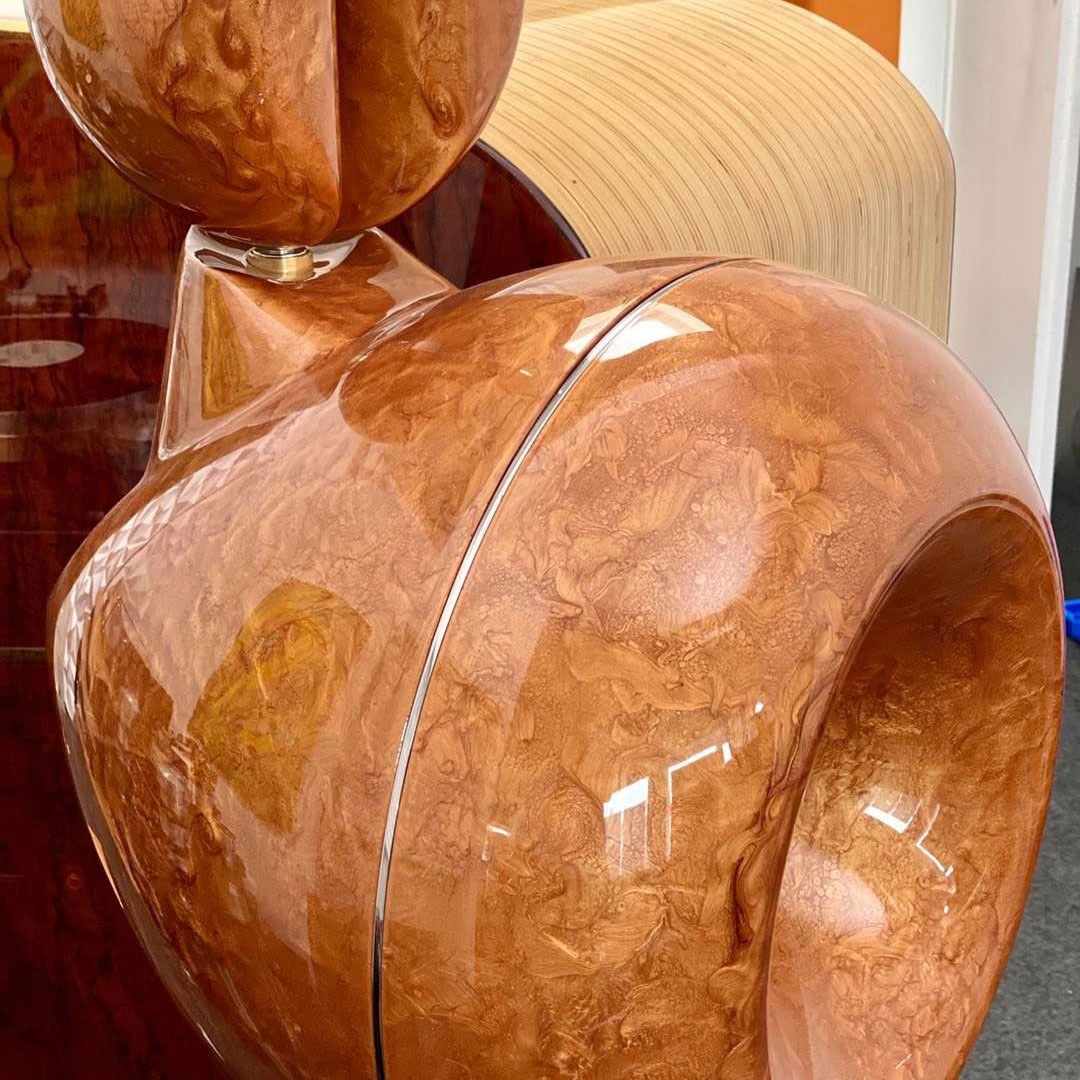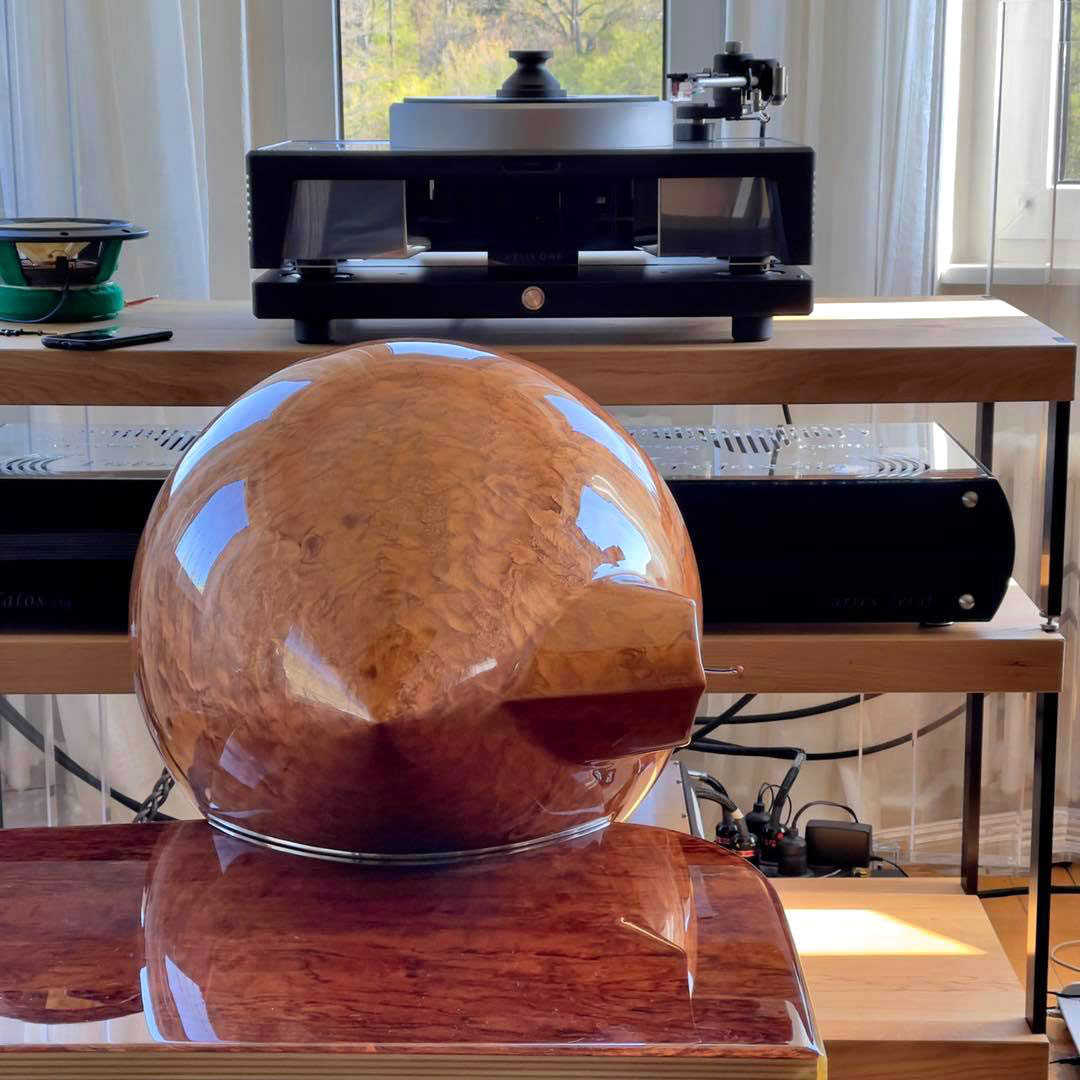
Symphonia Aeris Horn Speakers
3 WAY HIGH EFFICIENCY HORN SPEAKERS
When designed and implemented correctly, horns can attain a level of reproduction and dynamics unmatched by any other type of speaker

"Years ago as a young audio enthusiast, I was fascinated with horn speaker technology, and quickly recognised the innate potential in their design. After a lot of reading and research of the physics involved I began to develop an appreciation of the prior art, while at the same time noticing how some contemporary horn designs had fundamental flaws that undermine the advantages and introduce additional problems. I wanted to take the concepts from the early horn era and push them further, taking advantage of the technology of today in terms of computing, simulation, CAD-CAM and manufacturing advancements, and use it to advance horn performance whilst retaining classic horn virtues and sonic performance."
 Nhà thiết kế
Nhà thiết kế
The Symphonia is the result of an intensive five year research and development program in horn speaker engineering

High frequency transducer
The HF transducer is a customised highest quality true Alu foil ribbon, made by the RAAL company. This is loaded with a specially designed and uniquely shaped horn, which dramatically alters the parameters and performance of the tweeter.
The unique shaped tweeter horn, is a Zero Diffraction horn, with a 360 degree continuous flare, eliminating all possible diffraction in vertical
and horizontal axis, delivering perfect performance in frequency and time domain, with unmatched transient and distortion figures, by any other HF transducer technology used.
The horn body is made from solid wood.

The development
The development of the Symphonia’s tweeter was spread over a three year period. I was always mesmerised by the sound of a true ribbon, especially Raal’s designs, but usually direct radiating ribbons lack the punch and dynamics of a high-frequency compression driver. On the other hand, no compression driver could ever deliver the detail, accuracy and bandwidth of a true ribbon transducer. So we began research on whether it was possible to combine the two approaches to get the best of both worlds.
A normal ribbon is not designed to operate at high acoustic pressures typically present at the throat of a horn. It soon became clear a special ribbon would need to be designed. After modification and experimentation on the Raal tweeter, we found the end result to more than meet our expectations. However, horn loading the ribbon still presented challenges. We were reluctant to use conventional solutions such as wave guides or directivity control apparatuses that would be inadequate for the task, so we endeavoured to find a new approach.
This lead us to design a horn flare that specifically loaded the ribbon as a true horn. Nevertheless, the line source emission characteristic of the ribbon made this extremely difficult. Diffraction is secondary sound emission, and takes place in geometric anomalies, transitions of geometry and changes in curvature. It’s very much audible and almost impossible to eliminate. In horns, diffraction is present at the horn termination for round horns. In rectangular horns the problem is more pronounced.

The solution
The solution was the implementation of our diffraction-less 360 degree horn technology. We designed the horn flare to expand to 360 degrees, while maintaining the flare curve’s second derivative constant, keeping the curvature slope constant. Precise measurements were made of each iteration in an attempt to match the simulation and theory to its real-world acoustic performance.
We found variations of just 0.2mm to have detrimental effects on the horn’s performance. Manufacturing them to specs from wood was also challenging. In the end, a total of fifteen different flares were designed, built, measured and eventually discarded before we settled on the final design that performed as we wanted.
The ribbon horn combination response is shaped to measure flat from 3KHz upwards. It delivers detail and resolution associated with only the very best ribbons, with the solid punch and dynamics of the very best high frequency compression drivers. Distortion characteristics at 114db are lower that those of the best dome tweeters at 95db. What’s more, the diffraction-less nature of the horn enclosure gives the tweeter unmatched time domain performance.
Midrange horn
The midrange horn is made from solid wood, it's unique flare is designed to eliminate all possible diffractions, which all other horns suffer from, and are part of their sound character. We completely eliminate diffraction coloration, which smears transients, with our 360 degree bullet-shaped solid-wood horn.
The driver used is a large format (4 inch diaphragm) titanium driver, with a massive magnetic system (11kg magnet weight).
The midrange acoustic level can be altered via a multi-tap transformer, for tuning the speaker according to each room's acoustics.

One of the things
One of the things we wanted to overcome was the problem of diffraction that almost every horn suffers from. Diffraction is one of the major sources of so-called “horn sound”, whereas a true horn properly designed and implemented should not and will not have an identifiable sound of its own.
We decided to employ a round tractrix horn, modified with a specially-designed 360-degree diffraction-less flare. By using a bullet-shaped enclosure, we were able to completely eliminate colouration due to diffraction, and avoid the smearing of transient information that usually occurs.

We wanted
We wanted the horn to have a cut-off at least 0.5 octave lower than the crossover frequency, so we designed it to have a cut-off at 330Hz. The horn and bullet-shaped enclosure is CNC machined from solid plywood block, with a thickness of up to 15cm. The poplar plywood used was preferred to other types of plywood, as this had twice the strength-to-weight ratio of other types of plywood. Energy storage is thus halved.
The driver used is a large format titanium driver with a 4-inch diaphragm, coupled to a massive magnetic system weighing 11kg. The midrange acoustic level can be altered via a multi-tap transformer, allowing the Symphonia to be better integrated according to each room’s individual acoustics.
Horn loaded Bass unit
Our approach on bass loading is pretty straight forward, even though the technical solutions we employed were not. We needed at least 3m of horn length and 3300cm2 of effective mouth area. Usually in most contemporary designs, the default is of the use of shorter horns, resulting in limited bandwidth and the presence of ripples throughout the pass-band. Trying to geometrically approach a conical horn using commonly employed methods of folding horns - that is, conical sections of wood sheet to form a successive conical section - was problematic from both a practical and performance perspective.
Instead, we chose to employ a tractrix flare profile, strictly avoiding any sharp corners, deviation from actual theoretical geometry and with no abrupt curvature changes. This is a much greater challenge from an engineering perspective. Fortunately, we have a five-axis CNC router with a 5m3 work envelope that gave us the capability to design and manufacture a true tractrix horn from twenty-five vertically stacked sheets of plywood that satisfied all the above criteria. Another major advantage conferred by the stacked plywood structure was that is has the requisite mechanical rigidity to withstand the high acoustic pressure present inside the mouth of the horn, especially at these frequencies.

We believe
We believe that bass delivered from horn loaded drivers are unmatched in performance, as long as the horn in properly designed. Folded horns suffer from three major factors:
• Usually to short in length for the bandwidth used. Shorter horns and small mouth-area bass-horns, have large frequency response ripples, and strong coloration.
• The horn is often not folded correctly, the horn flare is formed by conical sections of wooden sheets, with sharp angles and many parallel surfaces, trying to resemble something like a true horn flare.
• Horns and bass horns in particular, submit their internal walls to extreme pressures. Plain sheets of wood are just not appropriate for this task.

The Bass horn
The Bass horn used is a 3.3m long horn with very large mouth area for the bandwidth used, providing excellent performance in bass extension and weight, with the lowest coloration than any other folded horn.
The horn flare, is a true tractrix flare, formed by stacked sheets of plywood, carved to formed a true 3.3m long tractrix horn, properly folded without any internal sharp angles and geometrical deviation from a the tractrix flare.
The stacked plywood construction, provides 10 times the stiffness (along the horn axis), compared to conical horns formed by sheets of wood, also constructed with much reduced weight/stiffness ratio, providing minimum energy storage.

External Crossovers
The external crossover, consists of three constant group delay filters. A constant group delay filter, is our own proprietary design, which alters the attenuation slopes of the driver filters, to shape the phase (and doing so the group delay) in such a way as to provide maximum group delay linearity.
Using this specific filter technology to the physically time aligned horns, the Symphonia speaker present time domain performance which is near perfect, and a frequency response with a maximum deviation of +-0.5db (250Hz-20KHz).
ARIES CERAT SYSTEM | IANUS GEMINEA MONOBLOCK AMPLIFIERS, INCITO S PREAMPLIFIER, SYMPHONIA SPEAKERS


Thông số kỹ thuật
3 WAY HORN SPEAKER SYSTEM
High frequency transducer: RAAL Ribbon tweeter with modifications. Housed in a 360° flare. CNC machined solid wood housing. Lateral adjustment.
Midrange Horn Unit: 4 inch compression driver horn, oversized magnets and mounted on a custom throat. Horn enclosure CNC machined in solid plywood.
Bass Unit: Tractrix horn loaded enclosure made of dense plywood sheets. Custom internal 3.3 metre horn exiting to a large mouth.
Crossover: Custom built 3 way constant group delay filters with time domain technology and filtering. Adjustable gain for the 3 way for room tuning.
Sensitivity: 101dB
Frequency response: (-3db) 32Hz~100Khz +-0.5db at 250Hz-20KHz
Weight: 170 kilos per channel
Overall dimensions: 930mm W X 1400mm H X 880mm D
Paint finishes Aeris version: Black with Bronze Metalic for the horns. Wood veneer for the bass unit sides. Crossover finish to match.
Paint finishes Custom Aeris version: Liquid Copper finish for the horns. Wood veneer for the bass unit sides. Crossover finish to match.
